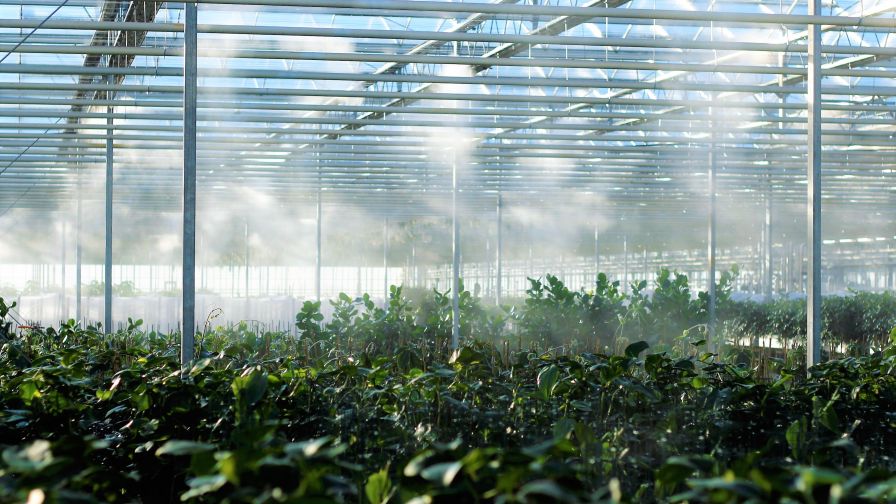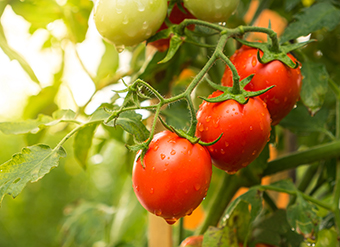How to Start Talking About Water Circularity in Your Greenhouse

Photo: Katrien Van Crombrugghe
As global water scarcity intensifies, commercial greenhouse operations must pivot towards innovative solutions that not only conserve this precious resource, but also bolster operational efficiency. Advanced irrigation systems, rainwater harvesting, and intelligent water recycling mechanisms emerge as pivotal components for successful water circularity in greenhouse operations.
First approaching those conversations, however, can be difficult, as ever-shifting operational priorities keep greenhouse growers busy. But water circularity is not just an ideal to be targeted down the road, it’s an investment in your business’s, and the industry’s, future.
Here, we offer some food for thought and advice on integrating water circularity principles in greenhouse operations to help increase water efficiency and profitability.
Review Plans and Data
The first step in evaluating potential water-saving opportunities is to map out the current water system. Reviewing updated plumbing and instrumentation diagrams (P&IDs) will help greenhouse operators understand currently installed equipment and how water flows through the facility.
When reviewing plans, Jeff Neff, Senior Technical Lead at Resource Innovation Institute member Argus Controls, advises decision-makers to consider the utility of every piece of equipment present in those plans.
“Question ‘Why do I need that piece of equipment?’” he says.
For example, reverse osmosis (RO) purification systems are staples in many cannabis and research facilities, but can create a lot of waste discharge and often use a lot of electricity, increasing production costs.
“Why are you using RO as opposed to your city water?” Neff asks. “What’s wrong with your city water? What’s wrong with your well water?”
Unless there are high levels of bicarbonates or other elements toxic to plants, most operations do not need to treat their incoming water with RO systems, with other filtration strategies able to more efficiently meet the facility’s needs.
“If you can remove a piece of hardware out of the whole system, that can help things as well,” Neff says. “When you have more hardware, you’re adding more complexity to the system, more things that break down. The last thing a facility manager wants is more complexity.”
In addition to reviewing P&IDs, Neff advises facility operators to also collect water usage data via flow meters. While the facility’s water meter will divulge how much water the entire facility uses in a given period, installing additional flow meters around the facility will offer a more granular view of how the facility uses that water. P&IDs will show where flow meters are installed, or where they may need to be added. Flow meters are relatively inexpensive and can greatly increase the visibility into any facility’s water use.
Larger greenhouse operations may also want to invest in leachate monitoring systems and/or testing of fertigation runoff, Neff says.
“If it’s going to a storage pond or a tank before it gets dumped, take a sample and send it off to the lab,” Neff says. “Then you can determine how much fertilizer you’re basically throwing down the drain with that leach that could potentially be treated and then reused.”
Water circularity upgrades can make any CEA facility more efficient, but justifying those costs can be more difficult for smaller operations.
“It’s hard for companies like ours to profitably design a system for a very small grower with a very small amount of water to recirculate,” says Al Zylstra, Division Manager at RII member Dramm. Certain equipment can only be made so small, meaning fixed purchasing and installation costs can make the return on investment too long for mom-and-pop operations.
Rather than looking to install new expensive equipment, Zylstra suggests operators audit their facility’s water usage by comparing ideal water usage against actual figures.
“Based on plant demand, what is your ideal water use in a greenhouse facility? How many 4-inch pots, how many 6-inch pots, 10-inch pots is it?” Zylstra says. “What is the crop, how much of it are you growing, and how much water does each plant take per day on a warm, sunny day? By doing that water audit, you can come fairly close to identifying how much waste you have in your water systems.”
Prioritizing Water Efficiency Upgrades
Once P&IDs are reviewed and current water usage measured, most operations’ next step will be making upgrade plans. Deciding where to start can lead to passionate conversations: should the most cost-effective solutions be implemented first? Or the ones with the highest water reduction/circularity potential?
Both Zylstra and Neff suggest operators take into account the local and state water regulations and how those are evolving as governments prioritize water-saving policies.
“What regulations are going to be applied to your area in the future?” Neff asks, stressing that regulatory noncompliance could lead to fines. Understanding what the water authorities’ priorities are can help CEA facility operators eat their water circularity elephant.
“It’s important to not only know what the regulations are, but to dig into their depths. Because, eventually, the questions that will have to be answered for the design team relate to that,” Zylstra says. “For example, we’ve been dealing with a customer that can drain their water to waste, but they have to remediate that water to the same quality and chemistry as it came out of the well. So that’s quite a different requirement than if you were to recycle that for irrigation purposes.”
Consider Controls and Automation Upgrades For Rapid Results
Anecdotally, overwatering has been and continues to be the “sin of our industry,” Zylstra says. “Overwatering leads to excessive leachate that needs to be treated and drained.”
Overwatering can happen easily, especially if operations are still hand-watering crops. According to RII’s Water Circularity Best Practices Guide, “[as] much as half the water applied by a hose without a shutoff at the nozzle end doesn’t make it into a pot, wetting the floors and aisles instead.”
Automating irrigation and fertigation tasks can be an early system upgrade that greatly improves water usage by reducing waste and only offering crops the exact amount of water needed when it is needed.
“Automated control of your irrigation goes a long way towards reducing use,” Zylstra says.
Before purchasing a state-of-the-art control system, Neff suggests looking closely at the systems operators currently have.
“Most facilities are not utilizing their control system to the maximum, and that’s where you should start,” he says. “Rediscovering forgotten automation features, such as flow monitoring of incoming and outgoing water, can help avoid unnecessary spending, downtime due to installation, and equipment calibration costs.”
Initiating conversations on water circularity may appear daunting amidst dynamic operational demands, yet it is an indispensable commitment for sustained success. While the journey towards water circularity can pose challenges, the potential benefits can also be transformational, including improved profitability, resource conservation, and adaptability to regulatory shifts.
As the industry faces this critical juncture, prioritizing water efficiency upgrades and embracing automation emerge as vital strategies. By doing so, greenhouse operations can not only overcome today’s challenges but also fortify themselves for a more sustainable and prosperous future.
For more water circularity advice and information, check out RII’s free Water Circularity Best Practices Guide here.









